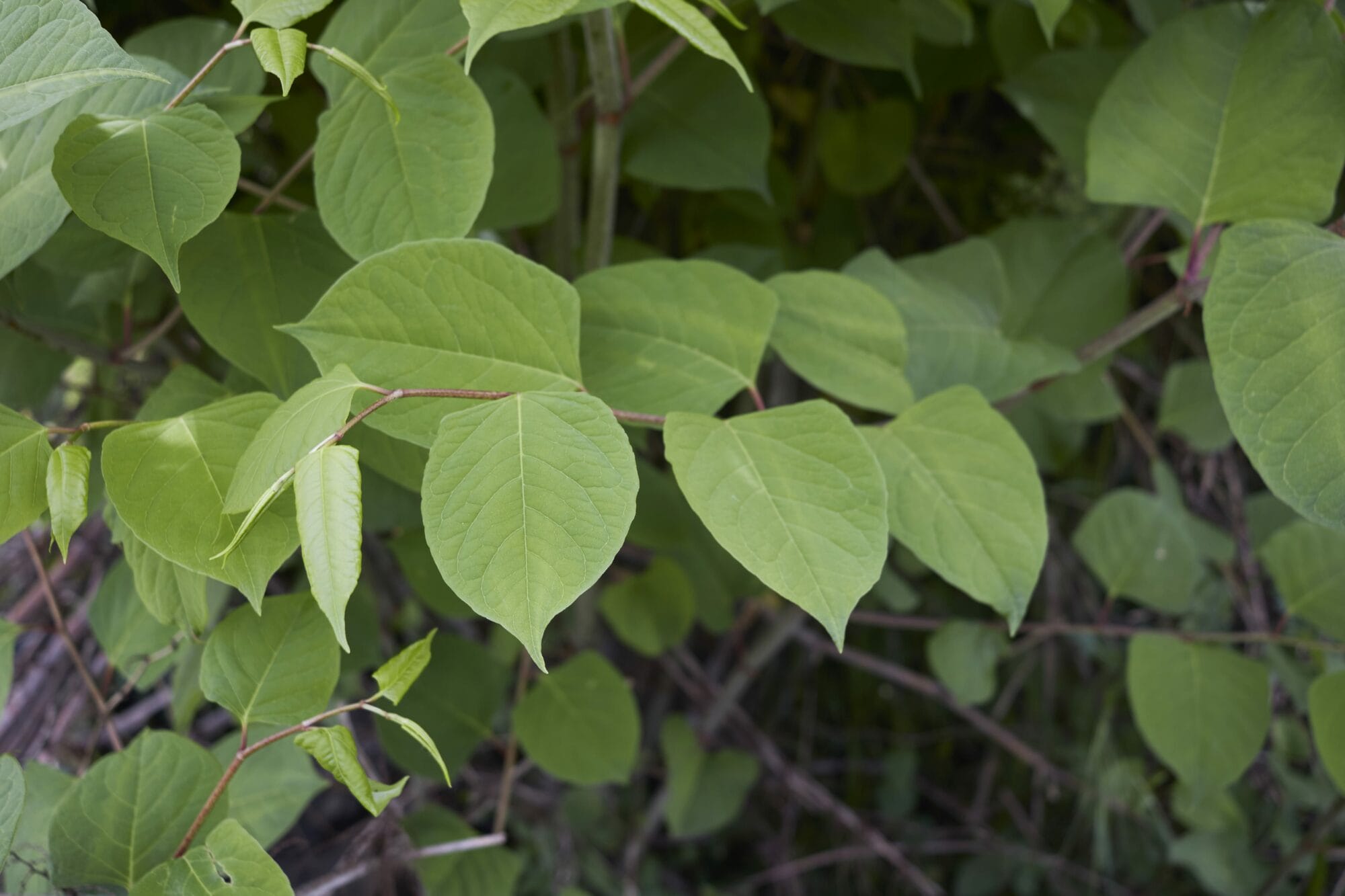Identify whether the weed in your garden is Japanese knotweed, with our guide to commonly mistaken plants.
Japanese knotweed has bamboo-like stems and heart-shaped leaves around 14cm long. Its botanical name is Reynoutria japonica, but its also known as Fallopia japonica. This rapidly spreading weed was originally brought to Britain in the 19th century as an ornamental garden plant. Its now classified as an invasive species. The Wildlife and Countryside Act 1981 states: It is an offence to plant or cause this species to grow in the wild.
Japanese knotweed is often confused with other plants. Here are a few of the most commonly mistaken plants, plus our tips on how to tell the difference between them and Japanese knotweed.
This vigorous non-native climber can reach 10m in height and spread 5-8m. Although it is an ornamental plant grown for its white flowers and isnt invasive, its vigorous growing habit has the potential to become a problem. Russian vine is native to Asia and a close relative of Japanese knotweed.
Differences: the leaves are slightly more arrow-shaped, and it doesnt have tall, stiff stems, as its a climbing vine.
Japanese knotweed is an invasive plant that can wreak havoc in gardens and on structures. Even though it looks quite attractive, it must be eradicated at all costs. It’s crucial to correctly identify Japanese knotweed so you don’t accidentally remove another innocent plant that resembles it.
There are several plants that are commonly mistaken for Japanese knotweed due to visual similarities in leaves, stems, or growth habits. However, a closer inspection reveals key differences that set them apart. Here are the top 10 knotweed lookalikes and how to distinguish them:
1. Bindweed
Bindweed is a climbing vine with heart-shaped leaves like young knotweed. However, it lacks rigid hollow stems and uses other plants or structures for support. The flowers and thinner overall habit identify bindweed.
2. Houttuynia
This short perennial has heart-shaped leaves but only reaches 30 cm tall unlike knotweed’s 2-3 meter height. The tiny white flowers are also distinctive of houttuynia, not knotweed.
3. Lilac
Lilac’s lush green shovel-shaped leaves look similar to knotweed’s when young. However lilac has woody stems and is not very invasive. The fragrant flowers are also a giveaway.
4. Russian Vine
Russian vine is closely related to knotweed and has similar shaped leaves. However, it’s a vining plant that needs support and has larger white flowers. The scrambling habit sets it apart from upright knotweed.
5. Broadleaf Dock
Broadleaf dock’s large oval leaves can resemble young knotweed foliage, but it forms circular basal rosettes. The taller flowering spikes differ from knotweed’s shorter panicles.
6. Himalayan Honeysuckle
Honeysuckle has hollow green stems with red tones that mimic knotweed’s canes. However, the hanging berries and paired leaves identify it as different. It’s also a bush rather than having bamboo-like stems.
7. Bamboo
Bamboo’s upright canes with nodes can look like knotweed stems. But the leaves are long and grass-like, not spade-shaped. Bamboo also keeps leaves year-round versus knotweed’s dieback in winter.
8. Buckwheat
Buckwheat leaves are similar in shape to knotweed and have white flowers. But buckwheat is an annual, doesn’t have invasive rhizomes, and is much shorter. The curved leaf bases also distinguish it.
9. Horsetail
Horsetail’s rapidly sprouting shoots can resemble new knotweed growth. But its bushy, branching stems and spore-bearing strobili are unique and replace the shoots. Mature horsetail looks nothing like knotweed.
10. Himalayan Balsam
This tall annual has hollow stems like knotweed. But the abundant large pink flowers are quite different. Alternate leaf arrangement and soft stems are giveaways too.
When in doubt, have an invasive plant expert positively identify suspected knotweed. Proper identification before removal avoids destroying harmless lookalikes mistaken for troublesome Japanese knotweed.

Lesser knotweed (Persicaria campanulata)

Persicaria campanulata, also known as Koenigia campanulata, is a perennial thats native to the Himalayan region. It has pink flowers from July to September and is a good plant for suppressing weeds on the border. Its not invasive but does spread through nodes on the plants stem, which put down roots when they touch the ground. Its easy to pull out if it gets too big for its spot.
Similarities: it has similar stems and leaf arrangement.
Differences: the leaves are long and thin with visible veins and the flowers are larger than Japanese knotweed, and bell shaped.
Himalayan honeysuckle (Leycesteria formosa)

Leycesteria formosa is native to parts of Asia including China and Tibet and although vigorous, isnt considered invasive in the UK. Its an easy to grow shrub that will thrive in a range of soils, in either sun or partial shade.
Similarities: similar-looking, hollow stems that grow to 2m or more, and leaves that are alternately placed.
Differences: the leaves are narrower than Japanese knotweed with pendulous purple and white flowers.
Plants That Look Like Japanese Knotweed: Plants Commonly Mistaken For Japanese Knotweed
FAQ
What mimics Japanese knotweed?
Lilac (Syringa vulgaris) Lilac is a garden favourite and is often a plant mistaken for Japanese knotweed. Spade shaped leaves and lush green foliage contribute to it being one of the plants that look like Japanese knotweed. Although it will send up lots of small suckers, that is the extent of its invasive capabilities.
How to tell the difference between Japanese knotweed and bindweed?
Bindweed has large white trumpet flowers while knotweed has clusters of small creamy flowers. Knotweed flowers appear towards the end of summer and autumn compared to late spring-early summer for bindweed.
What is the fake Japanese knotweed?
Red bistort is probably the most common. It and many other ornamental bistorts have leaves and stems that are very similar to knotweed species, and when not in flower they can easily be mistaken for them. Stems are hollow and separated into nodes like knotweed.
Why can’t you touch Japanese knotweed?
While knotweed isn’t poisonous, any scratches from its stem or leaves could potentially irritate sensitive skin, particularly in individuals with pre-existing skin conditions.
